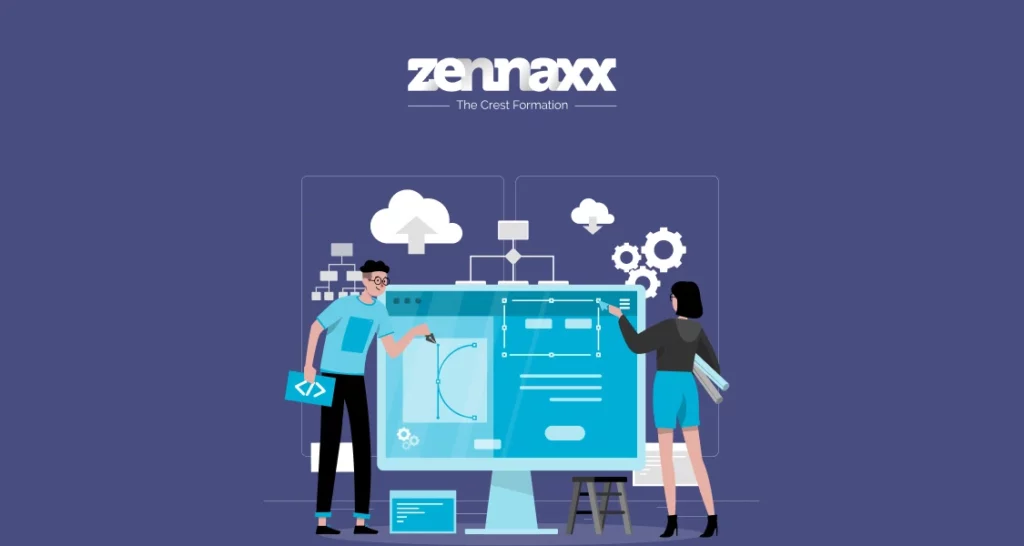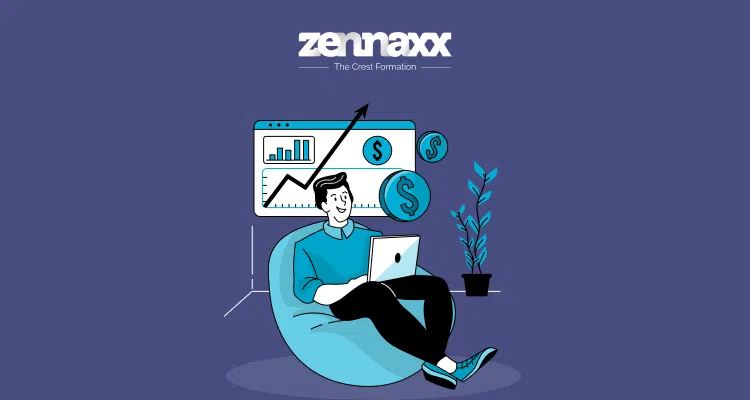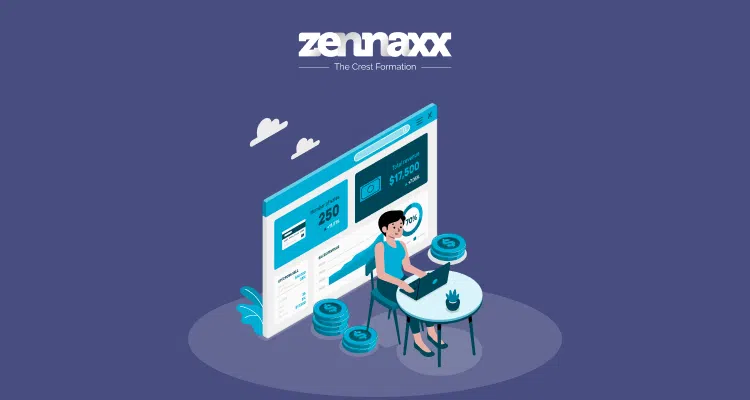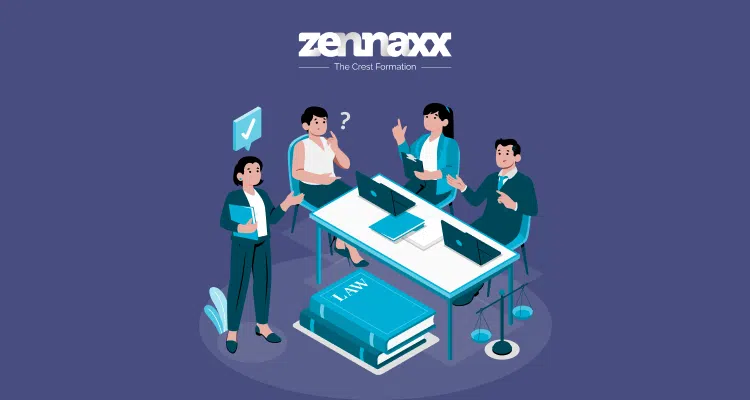Software as a Service (SaaS) is sort of a software program. SaaS product is an online app that you can use anytime, anywhere. The best part about SaaS is that it works smoothly for small industries and businesses. Just use an internet browser, and don’t have to worry about the type of tool you use.
The SaaS platform designs are hassle-free from maintenance and updates because the owner handles everything.
So customers can use up-to-date software without facing any problems and focus on your business. The best thing about it is that the User experience in SaaS Products is smooth.
Customer Relationship Management (CRM) structures and task management tools are all part of the SaaS product development. Creating SaaS products is working based on the cloud without perfect software.
It’s a considerable alternative that helps businesses do nicely in our virtual global. This blog covers the whole process with steps to create SaaS products simply.

Different Types of SaaS Applications Common Used in Business
Many different types of SaaS applications are available on the internet. Depending on your business workflow, you must find an easy SaaS product. Here are descriptions of the most used types of SaaS applications.
1. Customer Relationship Management (CRM)
CRM Inputs and tracks customer information. Also, it manages sales pipelines, automates marketing campaigns, and provides efficient customer support. This facilitates a comprehensive understanding of customer needs and behaviours.
2. Enterprise Resource Planning (ERP)
ERP SaaS Programs integrate various business processes, such as finance, human resources, and supply chain management. They streamline operations, enhance collaboration, and improve decision-making.
3. Project Management
Project management SaaS tools assist in planning, organizing, and tracking projects. They often include features for task management, collaboration, and reporting. Users can create and assign tasks, set milestones, and track project progress on time.
Collaboration features like file sharing and communication tools help teamwork and transparency throughout the project.
4. Collaboration and Communication
alliance SaaS applications include tools for messaging, file sharing, and project collaboration. They promote efficient communication and cooperation among team members.
Team members can communicate, share documents, and collaborate on projects from anywhere with an internet connection. This enhances productivity and fosters a collaborative work environment.
5. Content Management Systems (CMS)
CMS SaaS applications allow users to create, edit, and manage digital content. They are commonly used for websites, blogs, and online documentation.
Users can easily create and update content through a user-friendly interface. CMS applications often support version control, allowing users to track changes.
6. Financial Management
Financial management SaaS applications assist with accounting, budgeting, invoicing, and financial reporting. They provide insights into an organization’s financial health.
Users can automate financial processes, generate invoices, track expenses, and create financial reports. This streamlines financial operations and ensures accurate and timely financial information.
7. Marketing Automation
Marketing automation SaaS tools automate repetitive marketing tasks like email campaigns, lead nurturing, and customer segmentation. They aim to improve marketing efficiency and effectiveness.
Users can set up automated marketing workflows and segment audiences based on behaviour. This SaaS program helps to enhance lead generation and customer engagement.
8. Business Intelligence (BI)
BI SaaS program gathers, analyzes, and visualizes data to provide insights into business performance. They support data-driven decision-making. Users can connect to various data sources, create interactive dashboards, and generate reports.
BI applications help organizations make informed decisions by transforming raw data into actionable insights.
These SaaS products exemplify the versatility and impact of cloud-based software development. In addition, this SaaS program is easy to modify as per project needs.
You can select different types of SaaS products for your productivity based on your business.
More market shares are given for the worldwide Software market as well as the four categories Enterprise Software, Productivity Software, Application Development Software, and System Infrastructure Software. In total, worldwide Software revenue is predicted to expand at a rapid pace, reaching US$858 billion by 2028 from US$659 billion in 2022.
The Main 7 Steps of SaaS Product Development
In this part, we provide easy steps for creating SaaS products. As an expert, there are many factors to check before developing any SaaS product. Here, we mention step-by-step factors for building SaaS products.
Step 1. Market Analysis:
Take a good analogy of the market you want to enter. Understand what’s going on, check out the competition, and see if going for a SaaS product makes sense.
Think about your target audience, their problems, and what others are doing. This info helps you set the stage for your product.
Step 2. Business Plan:
Think and make a clear SaaS product development plan. Understand UI/UX design principles for SaaS applications for better product development.
Cover the basics like marketing, making money, and your goals for the first few months. Plans can change, but a clear strategy is vital to creating SaaS products.
Step 3. Define Requirements:
Figure out what your SaaS product needs to do. Look at what other similar products offer, and decide what features are a must and what would be nice. This helps shape the basic version of your product, called the Minimum Viable Product (MVP).
Step 4. Choose Tech Tools:
Step 5. Build Your Team:
Get the right developers on board. It would help if you had a mix of talents like business analysis, design, coding, testing and someone to keep it all on track. You can hire your team, get freelancers for specific tasks, or join a software development company.
Step 6. Build a Mini Version (MVP):
It’s time to make a simplified version of your product. It’s not final, but it should have enough features to show off the main idea. This is your MVP.
Use it to get early users, see how they like it, and get feedback. This step helps you test the waters and tweak your plans before going all-in.
Step 7. Iterate and Enhance:
Listen to what users are saying about your MVP. Take their feedback seriously and use it to make improvements. Maybe some features need tweaking, or there are new ideas to consider. Keep refining your product based on real user experiences.
This iterative process helps you build a SaaS product that truly meets the needs of your audience and stays ahead of the game.
Just follow these steps to make a product that fits your audience. Be open to feedback and keep driving your application better based on user experience in SaaS products.
This way, your SaaS product will stay competitive and meet the changing needs of the market.
Planning SaaS software development?
Ready to elevate your software projects? Partner with us for seamless software solutions.
How to create an existing app for a SaaS model?
Converting an existing application to a Software as a Service (SaaS) model involves a strategic transition. Here are five essential steps for creating SaaS products:
1. Assess Suitability and Market Demand:
2. Restructure Application Architecture:
Change your application’s architecture to support multi-tenancy and scalability. Ensure that the computer system your app runs on can handle many people and groups using it simultaneously.
This is important to ensure everyone gets a smooth and fast experience when using your software together. Implement robust security measures to protect user data in a shared environment.
3. Integrate Subscription Management and Billing:
Create or add a tool that helps manage how people sign up, choose subscription plans, and deal with paying regularly. This tool should also handle sending bills and invoices.
This way, tracking who’s using your software and managing how they pay for it periodically becomes easier. Shift from traditional licensing models to subscription-based billing. This step is crucial for transitioning from a one-time purchase to a recurring revenue model.
4. Enhance User Authentication and Authorization:
Make your login and permission systems better to ensure that many people and different groups can use your app securely.
This upgrade ensures that each person and organization gets the right level of access and keeps everything safe. Implement role-based access control to manage permissions effectively. This ensures each user has appropriate access levels within the shared SaaS environment.
5. Implement Marketing and Communication Strategies:
Communicate the transition to your existing user base. Show how the new way of using your app (SaaS) is fantastic! Let people know it’s easier to get to, they’ll get cool updates regularly, and they can work together better.
These benefits make using the app more convenient, up-to-date, and great for teamwork. Develop marketing strategies to attract new users to the SaaS offering. Consider offering trial periods or introductory pricing to encourage adoption.
If you do these five steps, you can turn your current app into a SaaS one, like the cool trend of monthly apps you pay for. But remember, talking well with your existing users and explaining why the new way is excellent is super essential for it to work well.
7 Benefits of SaaS Product Development.
SaaS Product development brings many good things into the market and makes it a popular choice for businesses. Here’s why:
1. Cost-Efficiency
There is no need to spend big bucks upfront on hardware and software licences. The pay-as-you-go model keeps costs in check.
2. Accessibility and Convenience
Use SaaS apps from any device with internet and a browser. It’s perfect for remote work and easy collaboration.
3. Automatic Updates
Forget about manual updates. SaaS providers handle all the maintenance, so you’re always rocking the latest features and security.
4. Time-to-Market
Get your software out there fast. SaaS development is speedy and great for launching new stuff quickly.
5. Centralized Management
Let someone else deal with the technical nitty-gritty. SaaS providers handle hosting and infrastructure, freeing up your IT team.
6. Flexibility and Customization
Customize your SaaS solution to fit your needs. Tweak settings and features to make it uniquely yours.
7. Global Accessibility
Breakthrough borders. SaaS lets you use apps from anywhere, perfect for businesses with teams worldwide.
All these perks add up to more efficiency, savings, and flexibility for businesses. SaaS is the go-to choice for delivering software in today’s competitive world.
Want to Automate Your Business Process With a Software Solution?
Zennaxx, a leading software development firm in Canada, has delivered 700+ bespoke solutions spanning various industries.
9 Keys of SaaS Metrics You Should Monitor
Software as a service building is incomplete without monitoring in the perfect way. These metrics provide insights into your company’s performance, helping you make informed decisions and optimize your strategies. Here are some key SaaS metrics you should be tracking:
1. Monthly Recurring Revenue (MRR)
MRR represents the predictable and recurring revenue generated from subscription fees every month. It is a fundamental metric for understanding the financial health of your SaaS business.
2. Customer Acquisition Cost (CAC)
CAC is the cost associated with acquiring a new customer in a SaaS product. It includes marketing, sales, and other expenses. Monitoring CAC helps ensure that your customer acquisition efforts are cost-effective for your product.
3. Customer Lifetime Value (CLV or LTV)
The Customer Lifetime Value (CLV) represents the total revenue your company expects a customer to generate over their entire relationship. Comparing CLV to CAC helps determine the sustainability of your business model.
4. Expansion Monthly Recurring Revenue (Expansion MRR)
Expansion MRR accounts for additional revenue from existing customers through upsells, cross-sells, or usage expansion. It contributes to overall revenue growth.
5. Net Promoter Score (NPS)
NPS measures customer satisfaction and loyalty by asking customers how they like your product. It provides qualitative insights into customer sentiment.
6. Customer Satisfaction (CSAT)
CSAT is a metric that quantifies customer satisfaction based on a survey. Customers typically rate their satisfaction on a scale, providing valuable feedback on the user experience.
7. Free Trial Conversion Rate
If your SaaS product offers a free trial, tracking the conversion rate from free trial users to paying customers is essential. It indicates the effectiveness of your trial experience and sales process.
8. Lead-to-Customer Conversion Rate
This metric measures the percentage of leads that convert into paying customers from the market. Monitoring the efficiency of your sales funnel helps optimize your lead generation and sales strategies.
9. Customer Engagement Metrics
Track customer retention strategies for SaaS product development metrics such as activity, feature usage, and session duration. Understanding how customers interact with your product informs product development and customer support decisions.
Regular performance optimization in SAAS development and analyzing trends over time will empower your team to make data-driven decisions, optimize processes, and drive the sustained growth of your SaaS business.
Conclusion
The Creating SaaS products market is growing, with exciting opportunities for industries and businesses. More and more folks are realizing the benefits of SaaS, especially small and medium-sized businesses that find it just right for them.
Jumping into the SaaS market now could mean enormous possibilities and advantages later. It might be challenging, but understanding how it works is essential.
Zennax is here to help, ready to share their knowledge and experience to guide you through this journey. They offer services for all kinds of software development, whether you’re a small startup or a big company needing a complete software suite.
They firmly believe that technology can make businesses better and improve our lives. SaaS is one powerful technology, and if you’re curious about it, you can contact Zennax for a free chat to explore what it can do for you with their expert advice.
FAQs
- What is a B2B SaaS product?
- B2B SaaS (Business-to-Business Software as a Service) is an online tool for businesses, making their operations smoother and more efficient.
- How do you get into B2B SaaS industries?
- Start with good research; know the industry, competition, and your audience. Create a solid plan, build a great SaaS product, and network for potential partnerships. Read the full blog for detailed information.
- What is SaaS product marketing?
- SaaS product marketing is about promoting and selling online solutions. Use digital marketing ads to attract and keep customers and create an appealing online presence.
- Why is the SaaS business model effective?
- SaaS works well because it’s cost-effective, accessible from anywhere, and can grow with your business. Regular updates and easy management add to its efficiency.
- What things should I focus on as a SaaS product owner?
- Focus on customer needs, listen to feedback, and keep improving. Watch critical metrics like revenue and customer acquisition costs. Stay updated on trends, ensure data security, and communicate well with users for lasting success.


